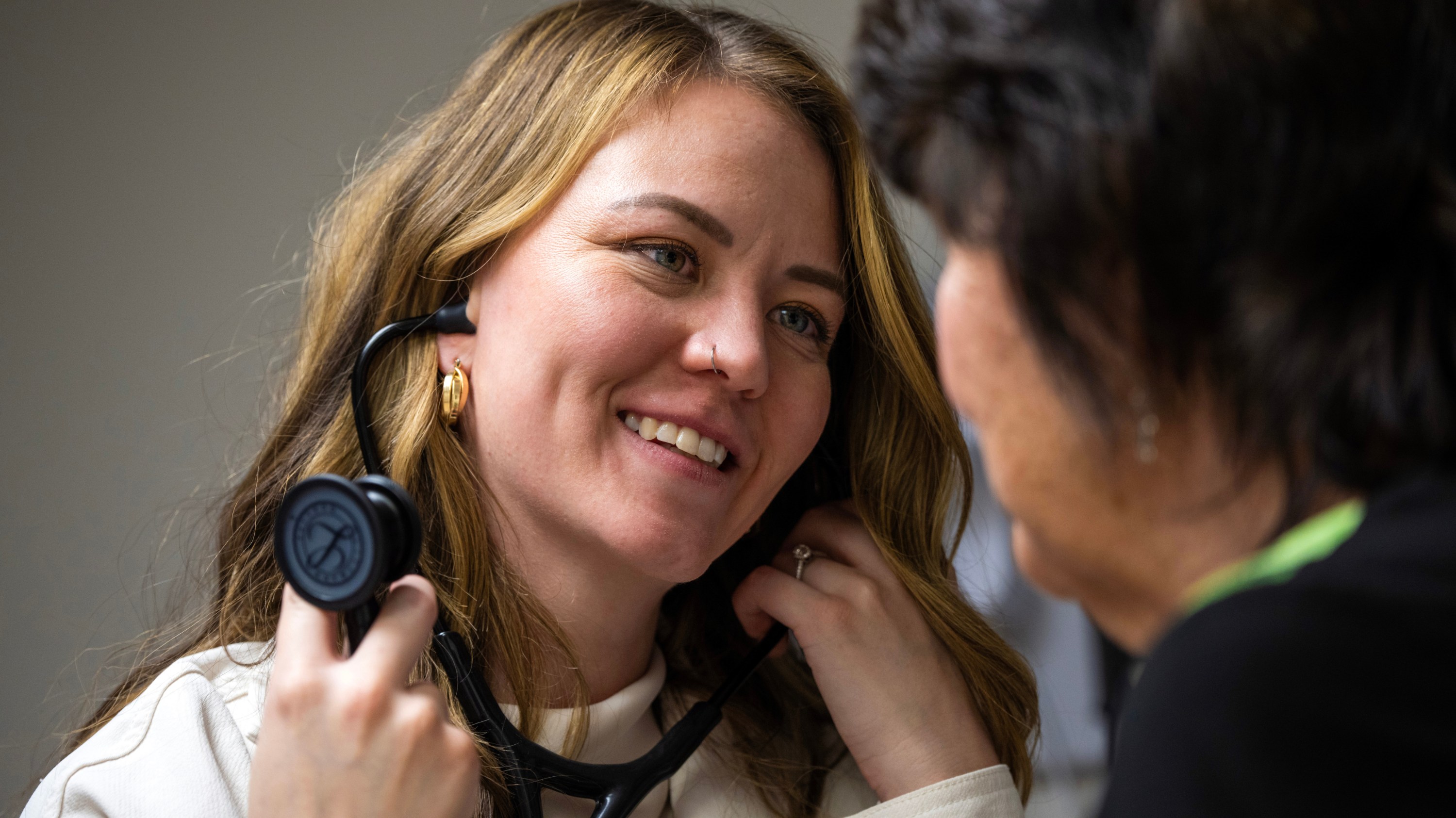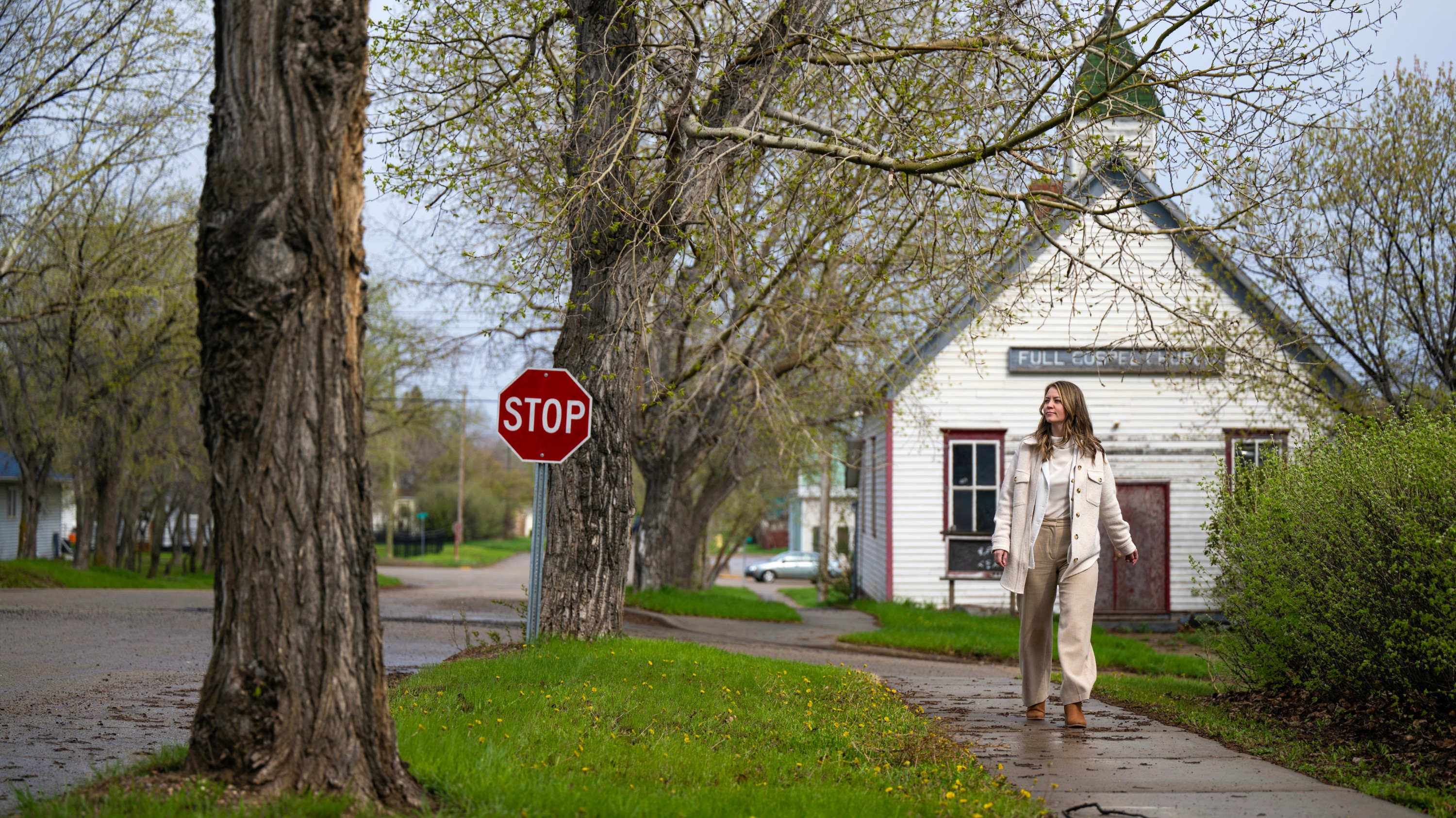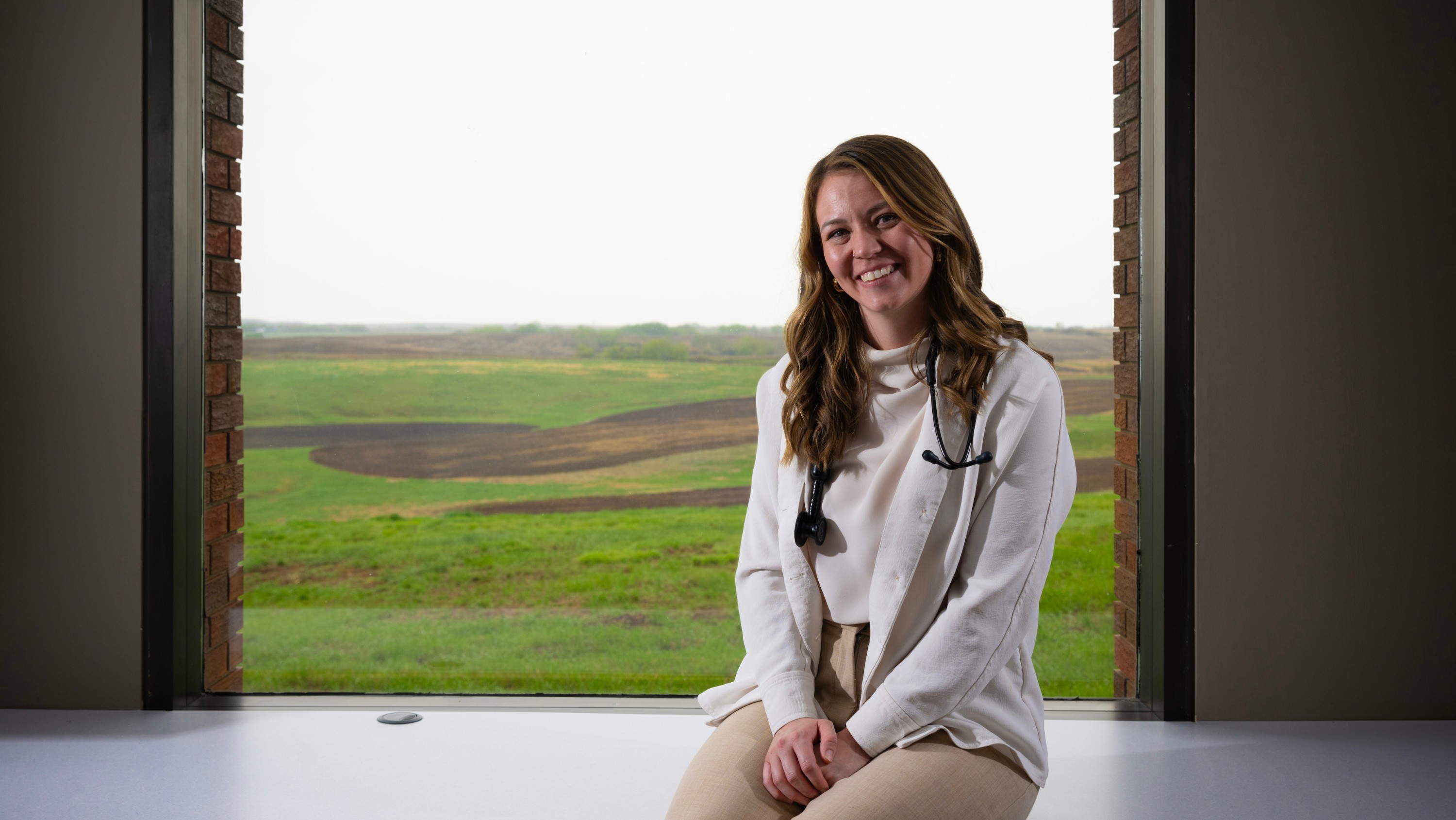It was COVID-19 that pushed her to go back to school and become a nurse practitioner. Christie Brulhart worked as a registered nurse in the emergency department at the Bonnyville Health Centre throughout the pandemic.
“They were the hardest two years of my life,” Brulhart recalls. “It’s a really close-knit, rural community where the person who might have been in line next to me at the grocery store last week is about to be intubated in hospital and is speaking their last sentence. And I’m the one hearing it.”
“It really brought to the fore for me that, if I had a provider role where I could prescribe or diagnose, I would be able to help a little bit more.”
Brulhart toyed with leaving nursing altogether but instead chose to go back to school for a master of nursing with a nurse practitioner specialization. She felt ready to take on more responsibility and more autonomy.
In June, Brulhart will start working as the sole nurse practitioner in the village of Consort, Alta., population 722. Consort’s claim to fame is as the birthplace of singer k.d. lang. It calls itself “The Village of Opportunity.” And that’s certainly what it is turning out to be for Christie Brulhart.
Small-town life, high-quality care
“Christie is committed to small-town life and she’s dedicated to delivering high-quality care,” says Anne Summach, associate teaching professor and director of nurse practitioner programs in the Faculty of Nursing. “She has a different perspective than many of our students who come from big-city hospitals.”
The nurse practitioner master’s program takes 20 months and includes specialty-based courses as well as 800 clinical hours. Students study clinical management with a focus on diagnostic reasoning, advanced health assessment, prescribing and interpreting tests — the types of skills taught to medical students during their undergrad.
“When nurse practitioners graduate, they’re capable of being autonomous clinicians who can assess, diagnose, prescribe and refer just like a regular physician would in their practice,” explains Summach.
Summach says nurse practitioners like Brulhart combine the perspectives of medicine and nursing, with a patient-centred, collaborative approach. “It can be really transformative care for people who have multiple chronic medical conditions or overlapping social and health issues,” she says.
“Finding a nurse practitioner with the skill set desired to be able to provide care in the medical clinic … was no small feat, but we did it,” hiring consultant Amy Deagle told the Consort Enterprise after Brulhart landed the contract. “Her reference checks were phenomenal; everyone I spoke with raved about her diagnostic skills, her communication with patients and her ER skills. One physician said he would choose her as a provider for his own care.”

There are long-term plans for Brulhart to help Consort eventually reopen its emergency department, but for now she will set up a primary care clinic. “Women, children, transgender people, families — anybody will be able to come to the clinic,” Brulhart says.
Having a clinic in town has many benefits for Consort. Some festivals and businesses won’t come to town unless there’s medical care offered in the community, and prospective residents might be likelier to choose a town with a health-care facility. But Brulhart’s real goal is to provide residents with peace of mind.
“There’s a lot of older people and young families in Consort. I can’t imagine what it’s like for them to have that niggling fear all the time that, ‘If something happens to me, where do I go? And who do I get help from?’”
Working together to fill the primary care gap
Consort residents were so thrilled when Brulhart was hired, they sent hundreds of Christmas cards to her and her husband Tyler, who plans to commute from Consort to his job in Bonnyville.

Brulhart grew up in Calgary and knew from an early age that she wanted to be a nurse. Born with a heart defect, she spent a lot of time in hospitals and required open heart surgery.
“I remember waking up in the ICU when I was three and seeing this really pretty face — it was the nurse. I told my mom that there was a princess in my room,” Brulhart says. “I just remember how gentle she was with me. As I grew older, I really understood that care was something I wanted to provide to others.”
Brulhart went to Mount Royal University for her undergrad and moved to Cold Lake, Alta., once she got her registered nurse certification.
“I had a professor who told me, ‘If you want to learn nursing quick and hard, go rural,’” she recalls. “I worked on a medical-surgical unit for about a year, tried labour and delivery, and then found my passion in the emergency department.”
While doing her master’s degree, Brulhart received a Northern Alberta Development Council Bursary, which encourages students to train for jobs that are in demand in northern Alberta. She says she feels equipped for her new challenge, thanks to her rural nursing experience and her U of A training.
“It was very practical and I felt like we were getting the information we need to be successful in practice,” Brulhart says. “I don’t think I would be as excited and willing to go into such a remote, rural practice without the nurse practitioner program.”
She credits her husband Tyler, a farm boy, for supporting her dream to open a small-town clinic. They plan to settle in Consort and hope to adopt a baby.
She foresees more nurse practitioners taking their places alongside physicians as essential primary caregivers across Alberta.
“We have seen in the literature that multidisciplinary care in a team approach is what we need,” Brulhart says. “Pitting nurses against physicians is ridiculous. There’s not enough of us, so let’s do the best we can to provide care together. Nurse practitioners can fill the primary care gap.”
